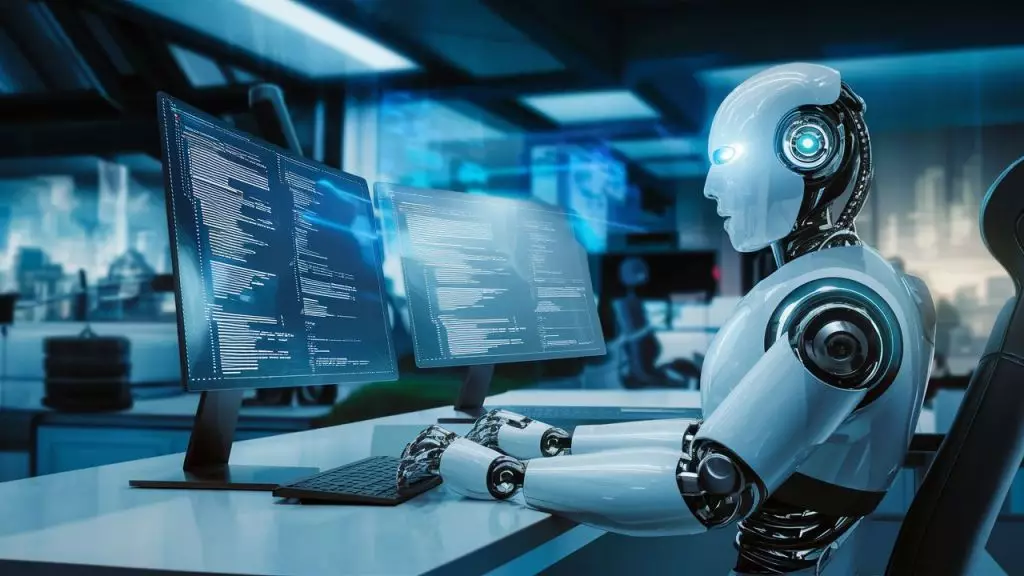In a significant shift towards accessible artificial intelligence, researchers from Together AI and Agentica have unveiled DeepCoder-14B, an innovative coding model that rivals other prominent proprietary models like OpenAI’s o3-mini. The implications of this release extend far beyond technical specifications, signaling a pivotal moment in the availability and democratization of AI technology. By open-sourcing not just the model but also its training data and system optimizations, these researchers are laying down the foundation for a collaborative future in AI.
What makes this development highly compelling is its strategic focus on strengthening code generation and reasoning capabilities. Unlike many proprietary systems that keep core technologies under tight wraps, the commitment to openness encourages individual researchers and smaller enterprises to engage with this powerful tool. As a result, it fosters a culture of innovation and inclusivity that is often so desperately lacking in high-stakes tech environments.
Performance Metrics That Turn Heads
DeepCoder-14B’s performance is nothing short of exceptional. Experiments demonstrate that it excels across multiple challenging coding benchmarks such as LiveCodeBench (LCB) and HumanEval+. The researchers emphasize that the model competes well against established proxies like o3-mini and o1. While benchmark results reveal its prowess in coding tasks, what’s particularly intriguing is the added edge in mathematical reasoning—scoring an outstanding 73.8% on the AIME 2024 benchmark. This indicates the potential for broader generalization of reasoning capabilities, which could redefine how coding models engage with complex tasks.
Consequently, the achievement of robust performance with a mere 14 billion parameters is striking. Smaller models traditionally limit capabilities, but DeepCoder-14B not only defies this paradigm but also affords increased efficiency in its application. This opens the door for many organizations to harness sophisticated AI tools without the burden of extensive computational requirements.
Navigating the Challenges of Training
The road to developing DeepCoder-14B was fraught with obstacles, particularly in curating high-quality training data. Unlike math, where extensive verifiable datasets are readily accessible, coding suffers from a lack of well-documented examples. The research team tackled this by implementing a meticulous data curation pipeline that sifted through diverse sources to compile a pool of 24,000 high-quality problems. This form of diligence is crucial, as a model trained with insufficiently vetted data risks producing inaccurate outputs.
Furthermore, the training procedure employs a focused reward system that provides feedback only when the generated code successfully passes unit tests within a designated timeframe. This methodology ensures that the model learns to engage with intricate coding challenges rather than falling back on memorized outputs or simplistic solutions.
To add complexity to its learning pathways, the researchers employed Group Relative Policy Optimization (GRPO), a reinforcement learning algorithm refined for stability. Through iterative extensions of the model’s context window, DeepCoder-14B is capable of managing increasingly complex reasoning tasks, thus pushing the boundaries of traditional reinforcement learning methodologies.
Innovative Techniques Accelerating Development
The team’s innovations do not end with data curation. They have introduced “One-Off Pipelining,” a transformative technique designed to streamline the training process. The model generates extensive sequences, which typically hinder training efficiency due to multiple factors, including variations in response lengths that can leave GPUs underutilized. By reorganizing the workflow of response generation and model updates, this optimization has yielded significant speed enhancements—up to 2x for coding RL tasks. It allows DeepCoder-14B to complete its training within a noteworthy timeframe of just 2.5 weeks on 32 H100s.
Such advancements not only advocate for accelerated model training but also encourage an ethos of shared innovation. By open-sourcing these enhancements, the research community can continue to build upon them, ensuring a collaborative progression in AI technologies.
Empowering a New AI Landscape
DeepCoder-14B exemplifies the burgeoning trend toward resourceful yet highly capable AI models that prioritize open accessibility. This paradigm shift holds astounding promise for enterprises across various industries. By making high-performance coding models accessible to a broader range of organizations, the barriers to the integration of AI technologies are significantly lowered.
As such models proliferate, businesses will have the opportunity to tailor solutions to unique operational needs—thus streamlining customization and enhancing deployment security. The ripple effects of this accessible technology can lead to innovative advancements and increased competitiveness among players in the market.
The move towards open-source AI technologies like DeepCoder-14B indicates a powerful evolution in the AI landscape. The release not only demystifies AI’s elite performance capabilities but positions it as a collaborative instead of a monopolized specialty. This collaborative spirit is vital for fostering a more inclusive and innovative ecosystem that can secure a future where AI is a powerful tool for all, not just a privileged few.


Leave a Reply